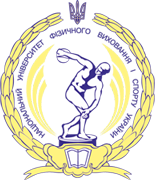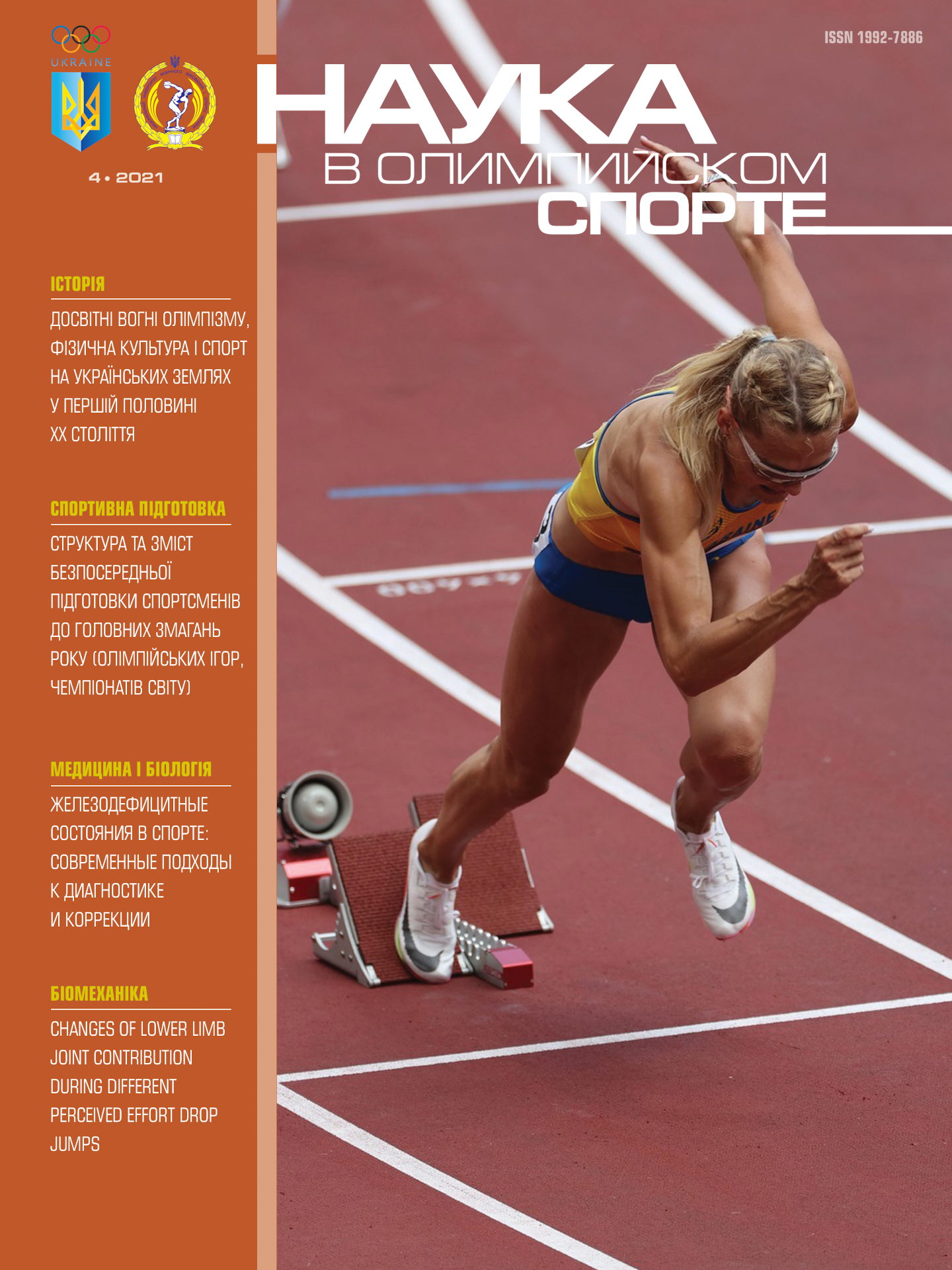Abstract:
Objective. To assess biomechanical measures of static dynamic stability of the body of rhythmic gymnastics female athletes in the basic balances at the stage of specialized basic training.
Methods. Theoretical analysis and generalization of scientific literature, methodological and practical experience of the trainers; method of expert assessments using video analysis of the technique of performing basic balances; stabiloanalyzer "Stabilan 01-2" to record the movements of the common center of pressure (COP) of the feet on the support, i.e. the coordinates at different time points that reflect the features of static dynamic stability. Three basic balance tests were performed. The study involved young female gymnasts of the Republican Complex Children and Youth Sports School "Avangard" (Kуiv) aged 10-14 years (n = 30), of which 20 athletes have the rank of Candidate for Master of Sport and 10 gymnasts have the rank of First-Class Sportsman.
Results. It has been found that, at the stage of specialized basic training, female athletes in rhythmic gymnastics, along with a stable demonstration of competitive compositions, have technical errors that are associated with an insufficient level of development of sensorimotor coordination, orientation in space and time, and static dynamic stability of the body. Indicators of biomechanical analysis of stabilograms, which were recorded during the performance of the basic balances by the subjects, show that stability control is achieved both through macro and micro-oscillations of the body, as well as the controlled ratio of the trajectory lengths of the common center of pressure on the support along the frontal and sagittal line. In some gymnasts, when performing basic tests, displacements along frontal and sagittal lines approached the ratio of 1:1 that indicates the effective formation of a system of symmetric motor actions for the control of static dynamic stability.
Conclusion. On the basis of individual measures of static dynamical stability of the body of rhythmic gymnastics female athletes at the stage of specialized basic training, an instructional program of exercises should be developed that will be aimed at development and improvement of static dynamic stability of the body using the technology of biological feedback in the system gymnast-stabilograph.













